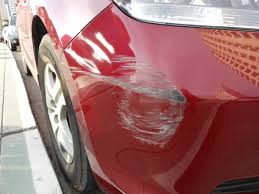This is a project of detecting damages from the images of car. The codes are based on implementation of Mask R-CNN by (https://github.com/matterport/Mask_RCNN) on Python 3, Keras, and TensorFlow. The model generates bounding boxes and segmentation masks for each instance of an object in the image. It's based on Feature Pyramid Network (FPN) and a ResNet101 backbone.
The repository includes:
- Source code of Mask R-CNN built on FPN and ResNet101.
- Instruction and Training code for Car Damage Detection
- Jupyter notebooks to visualize the detection pipeline at every step
- Example of training on your own dataset
- I have collected all the images from google images.
- I split the images in 223 train images and 15 validation images.
- I annotate the images using VIA (VGG Image Annotator) because of its simplicity.It’s a single HTML file that you download and open in a browser.
- The VIA tool saves the annotations in a JSON file, and each mask is a set of polygon points.
- I make the file car_damage.py using the instruction from this blogpost.
- I used Transfer Learning, which simply means that, instead of training a model from scratch, I start with a weights file that’s been trained on the COCO dataset.
- Mask R-CNN is a fairly large model. Especially that our implementation uses ResNet101 and FPN. So you need a modern GPU with 12GB of memory. I used Google Colab's Tesla K80 GPU to train this model.
- I train the model for 100 epochs, after which I got 0.1894 - training loss and 1.9137 - validation loss.
You can find the training steps in car_damage_training.ipynb.
-
You can inspect the result in car_damage_inspect_data.ipynb, car_damage_inspect_model.ipynb, car_damage_inspect_weights.ipynb.
-
Below are some predicted images from validation dataset.









